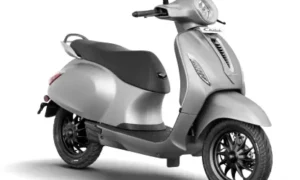Introduction
Garbage bags, often taken for granted, play a crucial role in maintaining cleanliness and orderliness in our surroundings. They come in various sizes, materials, and designs, catering to different needs and preferences. Whether it’s for household waste, commercial purposes, or outdoor events, understanding the properties and characteristics of garbage bags is essential for effective waste disposal.

Properties and Characteristics of Garbage Bags
When selecting the right garbage bags, several key properties and characteristics should be considered:
Durability and Strength
One of the most important aspects of a garbage bag is its durability and strength. A high-quality garbage bag should be able to withstand the weight and sharp edges of various types of waste without tearing or leaking. Look for garbage bags labeled as “heavy-duty” or “strong” for enhanced durability, especially when dealing with heavier loads.
Capacity and Size
Garbage bags come in different capacities and sizes to accommodate various amounts of waste. Larger bags are suitable for household cleanup or commercial use, while smaller ones are convenient for everyday kitchen waste. It’s crucial to choose a bag size that suits your needs to avoid overloading or underutilizing the bag’s space.
Material Composition
Garbage bags are typically made from various materials, including plastic, biodegradable materials, and recycled content. Traditional plastic bags are cost-effective and widely available, but eco-conscious consumers may opt for biodegradable options that break down more quickly in landfills. Recycled content bags contribute to waste reduction and support sustainable practices.
Thickness and Gauge
The thickness of a garbage bag is often indicated by its gauge or mil rating. A higher gauge number indicates a thicker bag, which generally correlates with increased strength and puncture resistance. Thicker bags are recommended for heavy or sharp waste, while thinner bags are suitable for lightweight waste.
Closure Mechanisms
Many garbage bags feature closure mechanisms to secure the bag’s contents and prevent odors from escaping. Common closure options include drawstrings, twist ties, and flap-tie closures. Drawstring bags are convenient for easy sealing and transportation, while twist ties provide a cost-effective option.
Odor Control
Odor control is a crucial factor, especially for kitchen waste. Some garbage bags are equipped with odor-neutralizing technologies that help contain unpleasant smells. These bags are ideal for indoor use, ensuring a more pleasant living environment.
Environmental Impact
As environmental concerns grow, many consumers are seeking eco-friendly garbage bag options. Biodegradable and compostable bags offer a more sustainable choice, as they break down more naturally over time. Additionally, some brands incorporate recycled materials into their bags, reducing the demand for new plastic production.

Design and Aesthetics
Garbage bags are available in a variety of designs and colors to suit different preferences and occasions. Clear bags are commonly used for recycling purposes, while black bags are preferred for concealing waste. Some brands even offer scented bags to mask odors and add a pleasant fragrance to the surroundings.
FAQs
Q: Can I use compostable garbage bags for outdoor bins?
A: Compostable garbage bags are best suited for composting facilities, where they can break down naturally. Using them in outdoor bins might not provide the ideal conditions for composting and may result in a slower decomposition process.
Q: What’s the benefit of using scented garbage bags?
A: Scented garbage bags can help mask unpleasant odors, making them a great choice for kitchen waste. The added fragrance can create a more pleasant environment while keeping unwanted smells at bay.
Q: Do recycled content garbage bags compromise on quality?
A: Recycled content garbage bags can be of high quality, provided they are manufactured properly. Reputable brands ensure that their recycled bags meet the necessary strength and durability standards.
Q: Are there garbage bags specifically designed for outdoor events?
A: Yes, there are garbage bags designed for outdoor events and gatherings. These bags are often larger in size and may have added features like tie handles for easy disposal after events.
Q: How do I choose the right size of garbage bag for my needs?
A: Consider the amount of waste you generate daily. For kitchen waste, a smaller bag might suffice, while larger bags are suitable for cleaning or decluttering tasks. It’s better to have a slightly bigger bag than a bag that’s too small to avoid overflows.
Conclusion
Garbage bags are more than just disposable containers; they play a vital role in maintaining cleanliness and hygiene in our living spaces. By understanding the key properties and characteristics of garbage bags, you can make an informed choice that aligns with your waste management needs and environmental values. Whether you prioritize durability, size, or eco-friendliness, there’s a garbage bag out there that meets your requirements.
Remember, the right garbage bag can make a significant difference in managing waste efficiently, contributing to a cleaner and more organized living environment.






























